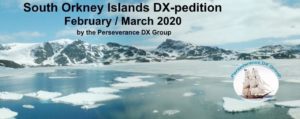 Perseverance DX Group has announced the intention to activate South Orkney Islands, and is planning an expedition to take places in February/March 2020. A team of experienced DX and Contest operators will operate from Signy Island (WAP GBR-Ø9) for up to 15 days. The process of obtaining landing permission is underway. The call sign will be announced at a later date. The team will sail from Punta Arenas, Chile aboard R/V Braveheart. Seven operating positions are planned for 160-10 meters, SSB/CW/Digital.
Perseverance DX Group has announced the intention to activate South Orkney Islands, and is planning an expedition to take places in February/March 2020. A team of experienced DX and Contest operators will operate from Signy Island (WAP GBR-Ø9) for up to 15 days. The process of obtaining landing permission is underway. The call sign will be announced at a later date. The team will sail from Punta Arenas, Chile aboard R/V Braveheart. Seven operating positions are planned for 160-10 meters, SSB/CW/Digital.
The Team includes: Dave K3EL, Les W2LK, Steve W1SRD, Ricardo PY2PT, Gene K5GS, Arliss W7XU, Heye DJ9RR, Laci HAØNAR, Mike WA6O, Vadym UT6UD, Walt N6XG and Rob N7QT.
Additional details will be released as they develop. Website: https://sorkney.com/
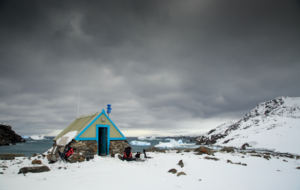 WAP archive has pics of field Huts still in place at the following un-referencended sites of Signy Islands in the South Orkneys:
WAP archive has pics of field Huts still in place at the following un-referencended sites of Signy Islands in the South Orkneys:
Foca Cove, Gourlay Peninsula, Cummings Cove. Let’s have a look of them.
Cummings Hut (WAP GBR-NEW) –Pic aside-
The U.K. Cummings Scientific Hut is located at Cummings Cove at 60°43’45” South, 45°39’50” West. It is visited regularly by British Antarctic Survey personnel from Signy Island (WAP GBR-Ø9). It has accommodations for 2 people, with food and fuel for 2 person-months. Cummmings Cove feels very remote and the hut is lovely on the outside, but very basic on its inside.
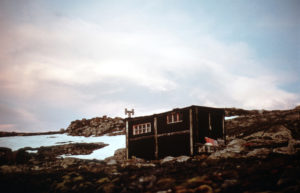
Foca Hut (WAP GBR-NEW) -Pic aside-
Foca Hut located at 60°41′ 50″ South, 45°38’40” West is a BAS refuge hut, established in the years 1959-60 near the head of the Foca cove; it is known as
Gourlay Huts (WAP GBR-NEW) -Pic below-
Gourlay Hut 60°43’50” South, 45°35’05” West, is worth a visit during the summer, as penguins and fur seals congregate there.
Gourlay itself  also has some amazing views, just from the hut across Rock Haven, a popular spot for seals as well as penguins .The Gourlay peninsula 60°44’ South, 45°36’ West, is an ice-free site that guests 2 Huts; the hut on the left is a standard hut with a couple of bunks and on the right is the work hut.
also has some amazing views, just from the hut across Rock Haven, a popular spot for seals as well as penguins .The Gourlay peninsula 60°44’ South, 45°36’ West, is an ice-free site that guests 2 Huts; the hut on the left is a standard hut with a couple of bunks and on the right is the work hut.
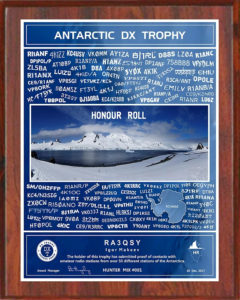 DX TROPHY AWARDS GROUP issues a trophy “ANTARCTIC DX TROPHY” for QSO ‘s / SWL. with stations in Antarctica.
DX TROPHY AWARDS GROUP issues a trophy “ANTARCTIC DX TROPHY” for QSO ‘s / SWL. with stations in Antarctica.
 Russia and China have got a joint symposium on March 25th, the first event in a series of meetings the scientists have scheduled.
Russia and China have got a joint symposium on March 25th, the first event in a series of meetings the scientists have scheduled.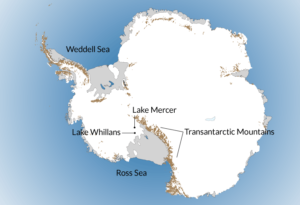 Lake Mercer, 84° 39’ 39” South, 149° 40’ 37” West, is a subglacial lake in Antarctica, that has remained untouched for millennia. Scientists accidentally discovered the lake in 2007.
Lake Mercer, 84° 39’ 39” South, 149° 40’ 37” West, is a subglacial lake in Antarctica, that has remained untouched for millennia. Scientists accidentally discovered the lake in 2007.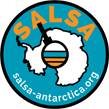 Located roughly 500 miles from the South Pole, team members reached the study site using specialized tractors and ski equipped aircraft. The project is uncovering new knowledge about this newly explored biome through an integrative study of subglacial geobiology, water column and sedimentary organic carbon, and geobiological processes in one of the largest subglacial lakes in West Antarctica.
Located roughly 500 miles from the South Pole, team members reached the study site using specialized tractors and ski equipped aircraft. The project is uncovering new knowledge about this newly explored biome through an integrative study of subglacial geobiology, water column and sedimentary organic carbon, and geobiological processes in one of the largest subglacial lakes in West Antarctica.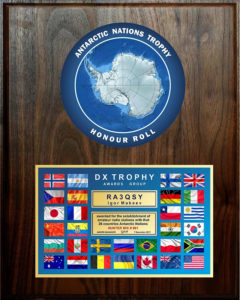 “DX TROPHY AWARDS GROUP” issues a new recognition to Hams ho can prove two-way radio communications with the Countries that have Research Stations in Antarctica; this is called
“DX TROPHY AWARDS GROUP” issues a new recognition to Hams ho can prove two-way radio communications with the Countries that have Research Stations in Antarctica; this is called 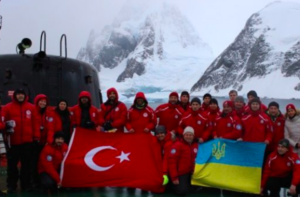 TurkishTeam visits 9 foreign research bases, including Spain, Britain and Russia
TurkishTeam visits 9 foreign research bases, including Spain, Britain and Russia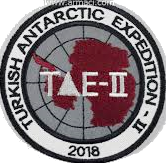 uld work two months in the Bulgarian Base to investigate different types of volcanic rock.
uld work two months in the Bulgarian Base to investigate different types of volcanic rock.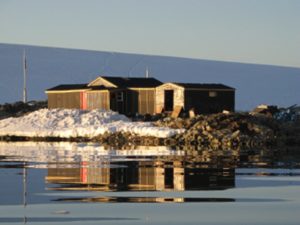 Wordie House (Pic aside) was established by the British Falkland Islands Dependencies Survey on 7 January 1947, on Winter Island (65°15’S, 64°16’W). The hut is named after the chief scientist, Sir James Wordie, geologist on Shackleton’s Endurance expedition of 1914–17 who visited during its construction. The hut stands on the foundations of an earlier building, used by the British Graham Land Expedition from 1935–36. The original hut was destroyed in 1946, possibly by a tsunami.
Wordie House (Pic aside) was established by the British Falkland Islands Dependencies Survey on 7 January 1947, on Winter Island (65°15’S, 64°16’W). The hut is named after the chief scientist, Sir James Wordie, geologist on Shackleton’s Endurance expedition of 1914–17 who visited during its construction. The hut stands on the foundations of an earlier building, used by the British Graham Land Expedition from 1935–36. The original hut was destroyed in 1946, possibly by a tsunami.
 Perseverance DX Group has announced the intention to activate South Orkney Islands, and is planning an expedition to take places in February/March 2020. A team of experienced DX and Contest operators will operate from Signy Island (WAP GBR-Ø9) for up to 15 days. The process of obtaining landing permission is underway. The call sign will be announced at a later date. The team will sail from Punta Arenas, Chile aboard R/V Braveheart. Seven operating positions are planned for 160-10 meters, SSB/CW/Digital.
Perseverance DX Group has announced the intention to activate South Orkney Islands, and is planning an expedition to take places in February/March 2020. A team of experienced DX and Contest operators will operate from Signy Island (WAP GBR-Ø9) for up to 15 days. The process of obtaining landing permission is underway. The call sign will be announced at a later date. The team will sail from Punta Arenas, Chile aboard R/V Braveheart. Seven operating positions are planned for 160-10 meters, SSB/CW/Digital. WAP archive has pics of field Huts still in place at the following un-referencended sites of Signy Islands in the South Orkneys:
WAP archive has pics of field Huts still in place at the following un-referencended sites of Signy Islands in the South Orkneys:
 also has some amazing views, just from the hut across Rock Haven, a popular spot for seals as well as penguins .The Gourlay peninsula 60°44’ South, 45°36’ West, is an ice-free site that guests 2 Huts; the hut on the left is a standard hut with a couple of bunks and on the right is the work hut.
also has some amazing views, just from the hut across Rock Haven, a popular spot for seals as well as penguins .The Gourlay peninsula 60°44’ South, 45°36’ West, is an ice-free site that guests 2 Huts; the hut on the left is a standard hut with a couple of bunks and on the right is the work hut.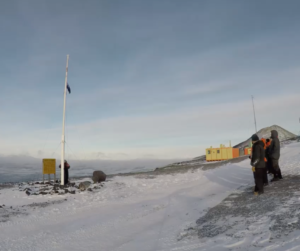 WAP joins the solidarity with Christchurch shooting victims expressed WW on last 15th March’s tragic day.
WAP joins the solidarity with Christchurch shooting victims expressed WW on last 15th March’s tragic day.
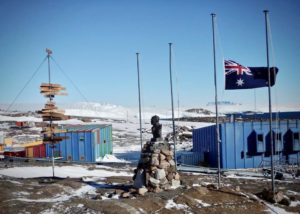 flag was flown at half mast in support of all NZ following the appalling events that occurred in Christchurch.
flag was flown at half mast in support of all NZ following the appalling events that occurred in Christchurch.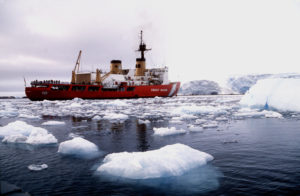
 Owned by the Masaryk University, the Johann Gregor Mendel Polar Station (63°48’ 02” South, 57°52’56” West)
Owned by the Masaryk University, the Johann Gregor Mendel Polar Station (63°48’ 02” South, 57°52’56” West) 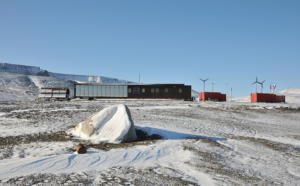 The Chilean military icebreaker Almirante Viel did transfer everything from Punta Arenas the James Ross Island in 2005. A deep geometric survey was performed as well as the foundations of the main station building and technical containers area. The official opening ceremony took place in February 2007 and made the Czech Republic the 26th Country to have its own Scientific Base on the Icy Continent.
The Chilean military icebreaker Almirante Viel did transfer everything from Punta Arenas the James Ross Island in 2005. A deep geometric survey was performed as well as the foundations of the main station building and technical containers area. The official opening ceremony took place in February 2007 and made the Czech Republic the 26th Country to have its own Scientific Base on the Icy Continent. relaxation and laboratory activities, and of nine technical containers in the vicinity of the building, which hold storehouses, garages and the power supply generator.
relaxation and laboratory activities, and of nine technical containers in the vicinity of the building, which hold storehouses, garages and the power supply generator.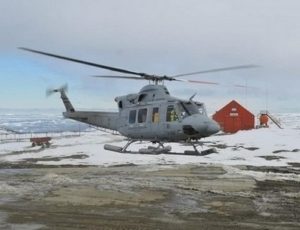 Members of the Argentine armed forces rescued a crew of 13 scientists from the Czech Republic that was stranded in Antarctica, under adverse weather conditions.
Members of the Argentine armed forces rescued a crew of 13 scientists from the Czech Republic that was stranded in Antarctica, under adverse weather conditions.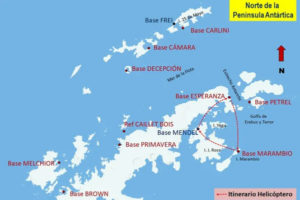 (COCOANTAR), who received the request for rescue from part of the scientific endowment of the Czech Antarctic base .
(COCOANTAR), who received the request for rescue from part of the scientific endowment of the Czech Antarctic base . To manage the Antarctic WAP Awards and its subsequent updates, the best solution is to use the WAP Software, set by IK6CAC.
To manage the Antarctic WAP Awards and its subsequent updates, the best solution is to use the WAP Software, set by IK6CAC.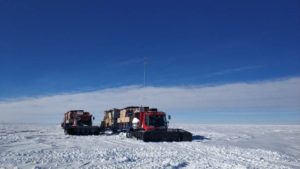
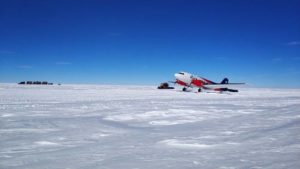 WAP is in contact with Oleg who has sent us pictures and details of the activity from the “Traverse Stop Point –Temporary Field Camp” from where Oleg RI1ANX did operate from 1 through 7 January 20019.
WAP is in contact with Oleg who has sent us pictures and details of the activity from the “Traverse Stop Point –Temporary Field Camp” from where Oleg RI1ANX did operate from 1 through 7 January 20019.
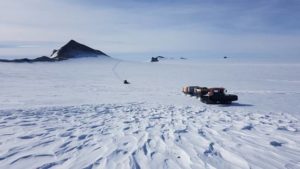 At the light of the evidence provided by Oleg Sakharov RI1ANX (aka ZS1ANF-UA1PBA) and to the 77 QSOs made from there.
At the light of the evidence provided by Oleg Sakharov RI1ANX (aka ZS1ANF-UA1PBA) and to the 77 QSOs made from there. The British Antarctic Survey has closed its Halley 6 Base (WAP GBR-37) for another winter.
The British Antarctic Survey has closed its Halley 6 Base (WAP GBR-37) for another winter.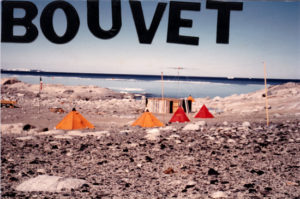 A question did arise among the Antarctic Ham Radio community about the location of LB4LC whose QSL card seems to say he did operate as /3Y in 1986.
A question did arise among the Antarctic Ham Radio community about the location of LB4LC whose QSL card seems to say he did operate as /3Y in 1986.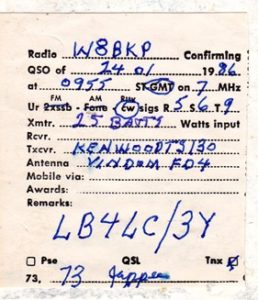
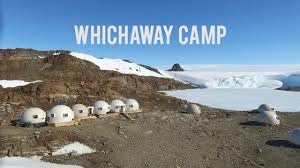
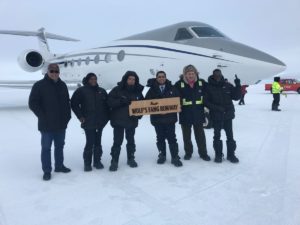
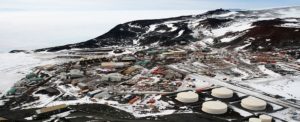 The National Science Board (NSB) has authorized the National Science Foundation (NSF) to move forward with the Antarctic Infrastructure Modernization for Science (AIMS) project. AIMS is planned as a 10-year undertaking to overhaul McMurdo Station into an energy- and operationally efficient platform from which to support world-class science. Through its Office of Polar Programs (OPP), NSF manages the U.S. Antarctic Program, which funds and facilitates the nation’s scientific endeavors on the southernmost continent and the waters around it. Thanks and Credit NSF.
The National Science Board (NSB) has authorized the National Science Foundation (NSF) to move forward with the Antarctic Infrastructure Modernization for Science (AIMS) project. AIMS is planned as a 10-year undertaking to overhaul McMurdo Station into an energy- and operationally efficient platform from which to support world-class science. Through its Office of Polar Programs (OPP), NSF manages the U.S. Antarctic Program, which funds and facilitates the nation’s scientific endeavors on the southernmost continent and the waters around it. Thanks and Credit NSF.